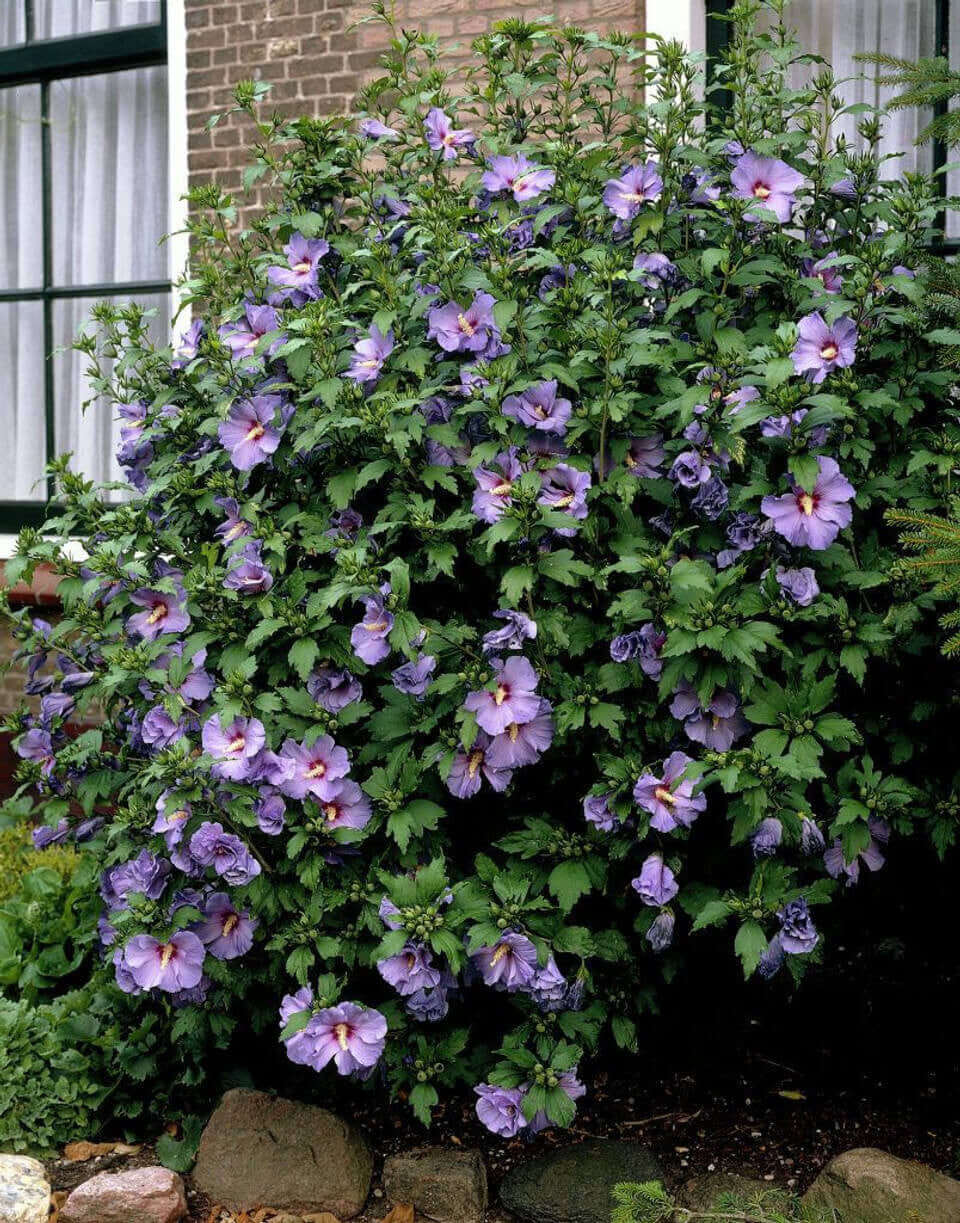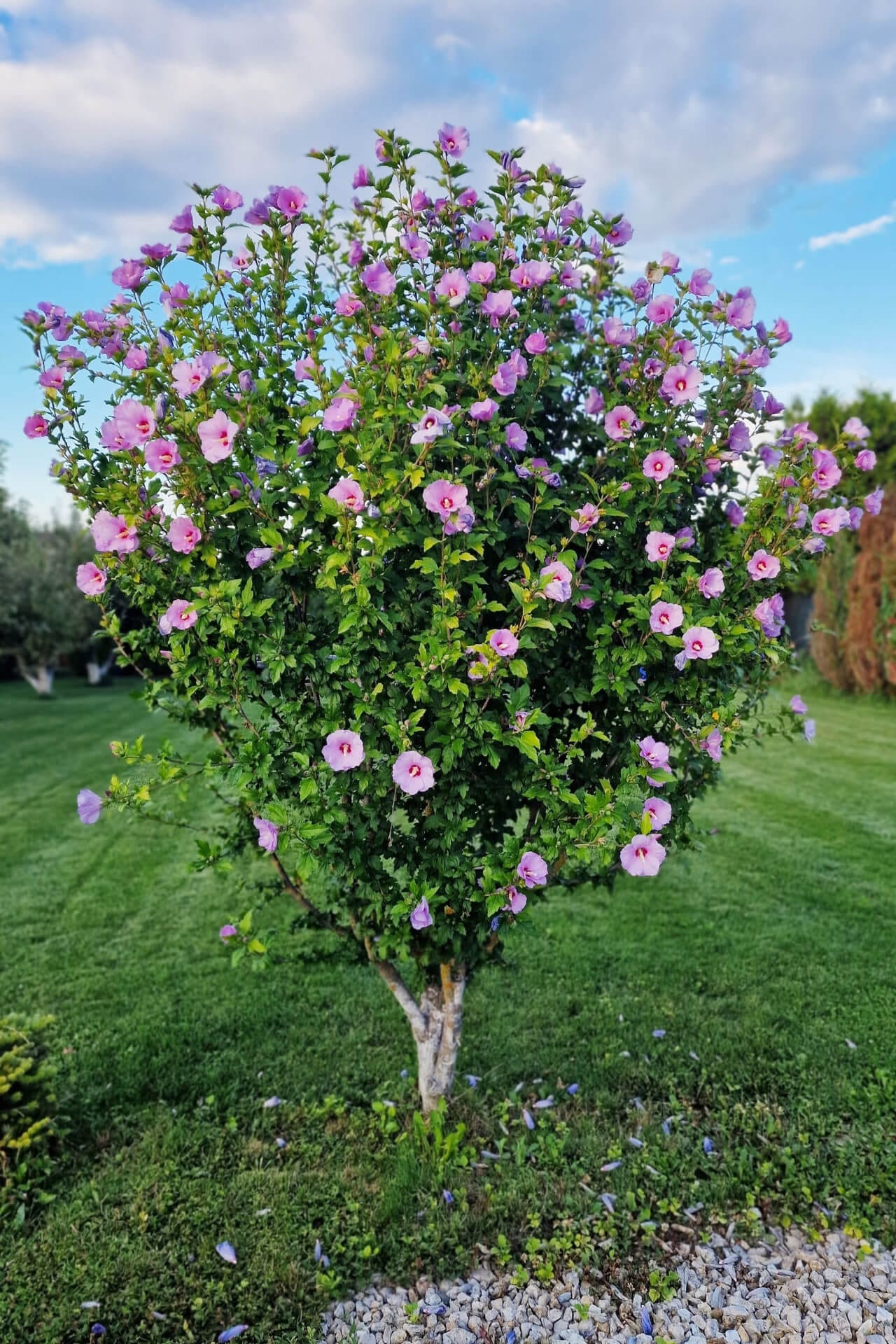Purple Hibiscus
Purple Hibiscus
| Order | Percentage Discount | ||
|---|---|---|---|
| 2-5 | 25% Off | ||
| 6-10 | 30% Off | ||
| 11-25 | 35% Off | ||
| 26-50 | 45% Off | ||
| 51+ | 65% Off | ||
Couldn't load pickup availability
5-7 Days
Under 25 Feet
Full Sun
5-9
Flowering
Bare-root
OR. AZ. FL.
Purple Hibiscus - Hibiscus Tiliaceus 'Purpurascens'
Purple Hibiscus, also known as Roselle, is a beautiful shrub that produces flowers and has a variety of uses.
Plant Appearance
It is a shrub that can grow to 96 inches tall and 6 feet wide. It has large, green, lobed leaves, producing stunning flowers with a red center. The bell-shaped flowers can be up to 4 inches in diameter. The plant also has fruit that is used in cooking and medicine.
Purple Hibiscus Growing Conditions
It is native to tropical regions of Africa but can be grown in many other areas. It also likes well-drained soil and regular watering. The plant can be produced from seeds or cuttings and requires regular pruning to maintain its shape.
Medicinal Properties
Traditional medicine has been used for centuries to treat various ailments. The plant's fruit is high in vitamins, which can help boost your immune system and prevent disease. It has also been used to treat high blood pressure, liver disease, and kidney stones. In addition, the plant has anti-inflammatory properties and can help relieve pain and swelling.
Uses
The plant's fruit is commonly used in cooking and is a popular ingredient in many dishes. It has a tart, citrusy flavor and can be used to make jams, sauces, and teas. The plant is also used to create a refreshing drink called Hibiscus tea, which is popular in many parts of the world. In conclusion, Purple Hibiscus is a beautiful and versatile plant with many uses. Whether you are interested in its medicinal properties and culinary services or enjoy its stunning flowers, this shrub will surely impress.
The shrub is a tropical perennial shrub. This plant is both an annual and perennial herbaceous plant growing into small trees or woody shrubs. The plant is renowned for its showy flowers and large trumpet-shaped petals in groups of five or more. In the early summer and early fall, expect to see the shrubs in full bloom.
Only leafy dark green foliage remains in the late fall and winter. This plant proliferates and can be grown in containers near garden ponds, outdoor living areas, landscape borders, and perennial gardens. It prefers six hours daily in full sun or mostly sunny areas with well-drained loamy, sandy, or silty soil. The soil's pH should be 6-8. It's very resistant to heat.
The shrub grows 5 to 6 feet high with a width of 4 to 6 feet. In the wild, they grow up to 32 feet. The shrub grows fast, needs the average amount of watering, and, when planted in a landscape, will draw butterflies, hummingbirds, and songbirds to your garden. To propagate the shrub, the gardener can plant its seeds and use grafting, cuttings, tissue culture, and air-layering.
The blooms last until the first frost, and they are from late June to early August. To maintain a healthy-looking plant, thin it out regularly. It can't thrive when the foliage is too dense. When grown domestically, the size is determined by how it is cared for or if it requires pruning.
This is a robust plant that does well when planted in beds or containers. They may need to be brought inside or adequately sheltered during the winter. In regions that do not have hard freezes, they can be planted directly in the ground and used as shrubbery and borders in landscapes.
What is most desirable about the shrub is the ample amount of large, beautiful blooms it produces from early spring into the middle of fall.
This Is How Your Plants Will Look upon Delivery
Bloom/Foliage Color
Purple
Shipping date depends on the date displayed and chosen when you order from the product's page.
We only accept returns on plants verified dead. If you think your plants have died, we offer a 1 year warranty, please use use this File a Claim Link to verify dead plants and start with return warranty process.



This plant arrived quite promptly and well packaged. I cannot emphasize enough how amazing this shrub is as it slowly mature.
Your review made our day! We have passed your comments on to our team so they can enjoy the good vibes too. Comments like yours make our work worthwhile.






